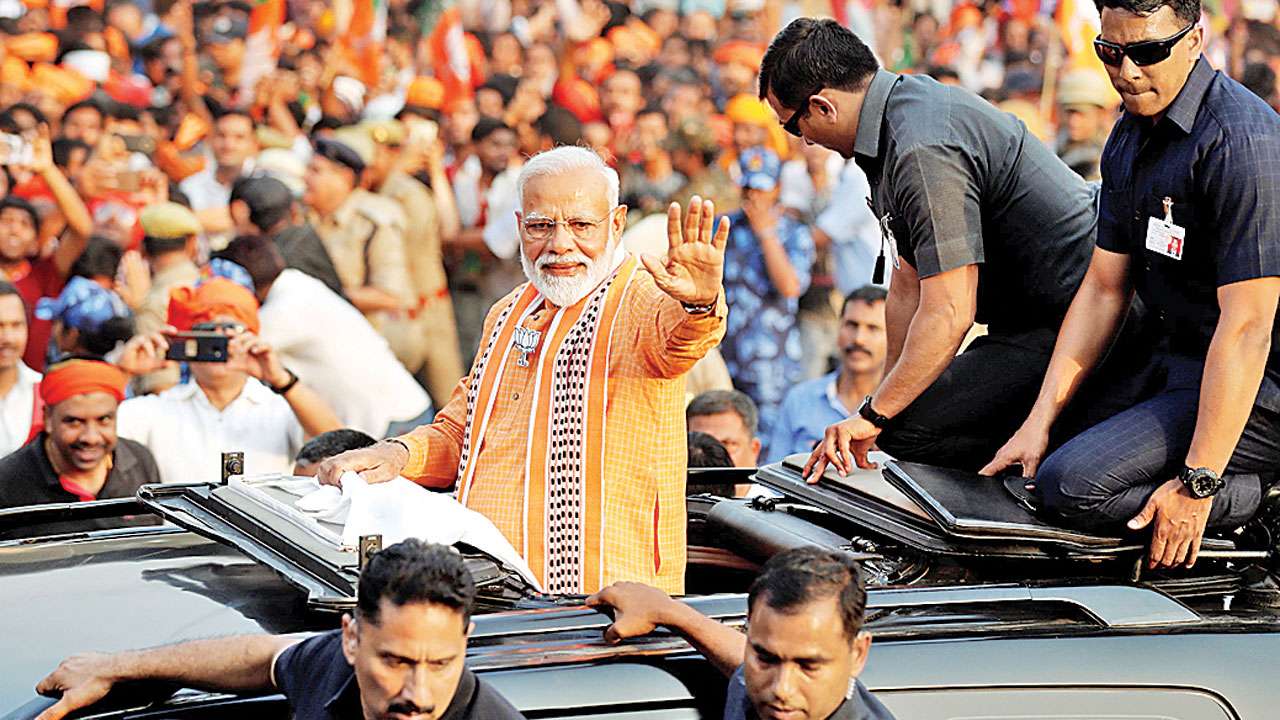
Just when we are nearing the close of this gruelling election season, Time magazine Asia’s cover story for May 20 has been receiving wide publicity. It shows a grim-looking Narendra Modi, in an Indian style black bandgala jacket, now popularly known as a Modi jacket, and a saffron shawl draped around his neck. So far so good. Why shouldn’t an Indian serving Prime Minister and most visible candidate, besides most likely to be re-elected incumbent, not grace the cover of an international newsmagazine, especially towards the end of the world’s largest and greatest parliamentary elections? Nearly a billion voters are eligible to cast their secret ballots in the mother of all election battles. Surely, this deserves the attention of the world.
But, wait a minute. What’s the caption next to the photo? “India’s Divider in Chief.” The cover story so titled is by gifted writer and novelist, Aatish Taseer. As if to offer a slightly balancing backup, also blazoned on the cover, is “Modi the Reformer” by Ian Bremmer. After reading both, one cannot but be disappointed. Bremmer makes an attempt to paint Modi in contradictory more than contrasting colours as both economic reformer and failure. There is little approbation for the huge slew of reforms and improvements carried out by the government. Hardly a word in favour of the palpable reduction in corruption, swacch bharat, ujjwala, infrastructure development, reduction in inflation, and blistering growth rate, many of which are seen as incomplete or inadequate. Bremmer’s scathing scepticism may be dismissed as typical of the fading vestiges of the white man’s burden, now more evident in envious disbelief of India’s economic miracle than in any mandate to rule the world.
But it is Taseer’s spleen-driven surliness, almost childishly querulous at times, that is galling. How can the cover-story on Indian elections be such a malevolent diatribe against a single man? There is not the least semblance of neutrality or objectivity here, nor attempt to present a sensible or balanced appraisal. It is an out-and-out hatchet job, full of selectively vicious quotes and incidents, often taken out of context and strung together to amount to a damning indictment. Repeatedly highlighting the plight of the frightened and disenfranchised minorities, mostly Muslims, under assault from the Hindu majority that Taseer portrays as invariably callous, even murderous, his article is nothing short of a doomsday dismissal of both Modi and India.
How to understand Taseer’s fustian fulminations? A good word for his kind of discourse would be re-Orientalism. Coined some ten years back by Lisa Lau, re-Orientalism refers to the continuation of narrative colonialism in post-colonial times. The major difference, however, is that its purveyors and perpetrators are no longer (mostly) white men, but “Orientals” such as ourselves. Mostly diasporic and highly privileged, these re-Orientalists, distort “the representation of the Orient, seizing voice and platform, and once again consigning the Oriental within the Orient to a position of ‘The Other.’” Taseer, with his last book on — what else but Varanasi — surely fits the bill. There is little room for the common Indian or the “real” India in his works, most of which are manufactured and intended for a Western audience.
There are ironies and contradictions galore in Taseer’s piece. “The Great Divider” was a moniker invented for none other than Barack Hussain Obama, the darling of Left Liberals the world over. If Donald Trump inherited it, it was by its sheer currency as an established political descriptor. The big contradiction, when it comes to Modi, is that Modi is actually India’s great Unifier-in-Chief. Modi has not only united Hindus as never before, but also integrated the great Indian middle class into a powerful political formation. He has given them a voice in addition to a vote. He has also unified the opposition, as Taseer acknowledges, “with no agenda other than to defeat him.”
Luckily, there is a silver lining to Taseer’s febrile lamentations. The more Modi is berated in the Western—or for that matter the Indian — media, the more popular he becomes with the Indian masses. Time Asia’s cover story, negative though it certainly is, will strengthen the resolve of the educated classes to vote for him. Especially given of the contempt poured out on their choice of him his their PM, they will take such denunciations as an additional reason make good on the promise, phir ek baar Modi Sarkar (one more time, Modi in power). In the end, of course, what Time says, or does not, matters little to us. We have moved on. To that extent, Taseer’s cover story may end up, if not as a last minute free fillip to campaign Modi, then little more than a blip, a momentary flicker or irritated swipe on a smartphone screen.
Author is Director, IIAS, Shimla Views are personal